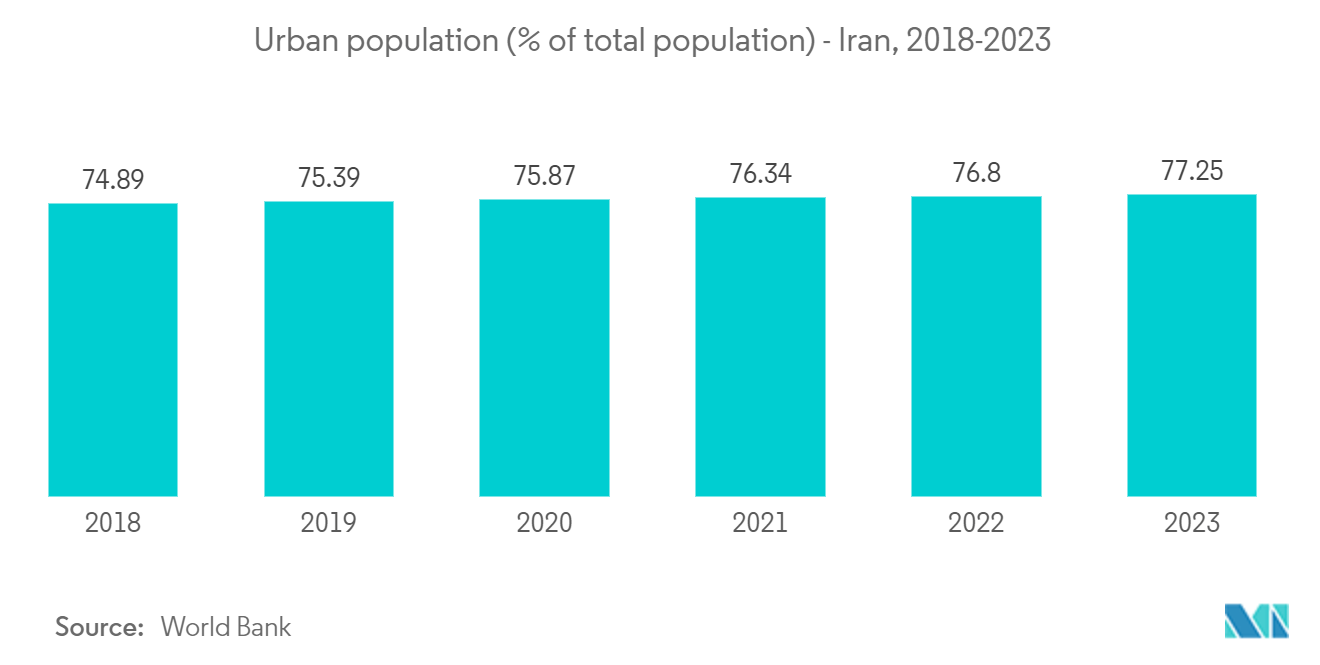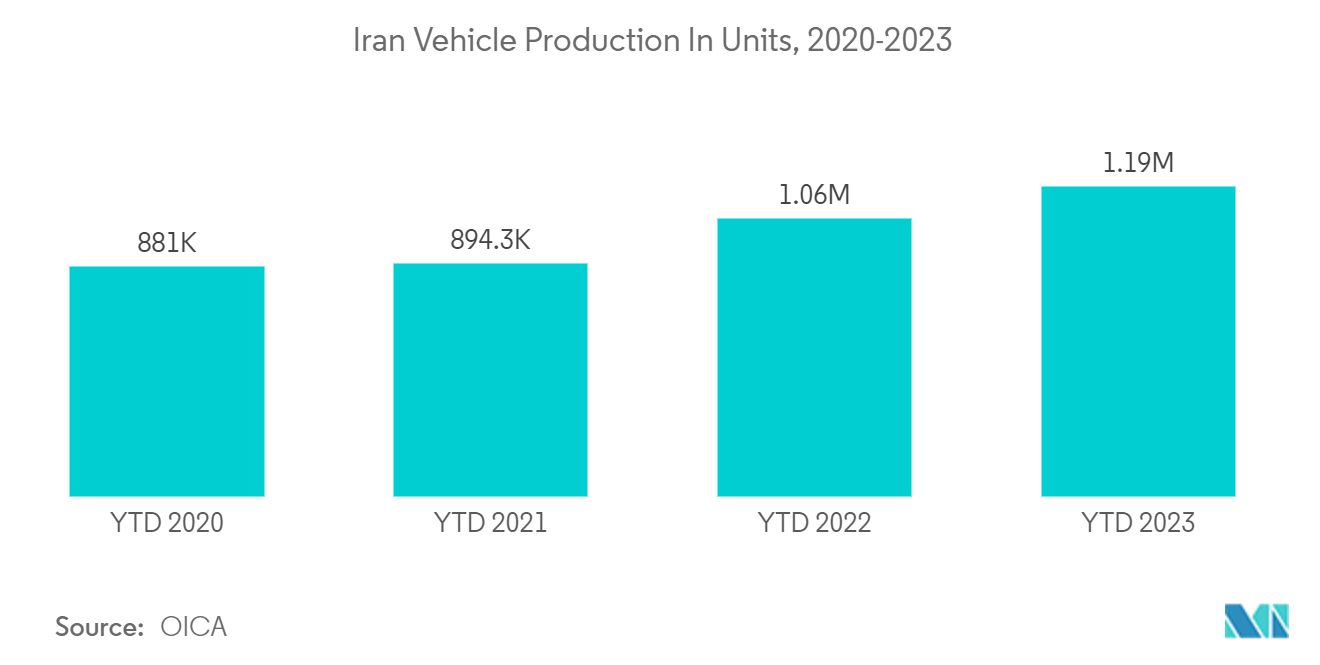Market Trends of Iran Vehicles Industry
Passenger Vehicles are Expected to Witness the Highest Growth
The Iranian automotive industry is experiencing significant growth, with passenger car production leading this growth. In the current calendar year ending March, passenger car production exceeded 1.13 million units, marking a 6% increase compared to the previous year. This surge in production underscores the pivotal role of passenger cars in driving the Iranian automotive industry forward. The rise in urbanization in Iran is also driving the demand for passenger cars.
The production of pickup trucks also saw a substantial uptick, with a 32% increase to 166 thousand vehicles during the same period. While pickup trucks contribute to the overall automotive output, the passenger vehicles segment remains the primary driver of growth and demand in Iran.
Commercial vehicles, including vans, minibusses, buses, trucks, and trailers, witnessed a modest increase of about 2% compared to the previous year, reaching over 40 thousand units. However, it is essential to note that passenger cars dominate the Iranian automotive landscape in terms of production volume and market share.
The private sector plays a significant role in the Iranian automotive industry, contributing approximately 23% of the total production, with around 307 thousand vehicles. This highlights the diverse ecosystem of manufacturers and suppliers operating within the passenger vehicles segment, catering to various consumer preferences and market segments.
In addition to passenger vehicles and commercial vehicles, the production of motorcycles also showed remarkable growth, surpassing 600 thousand units this year. This notable increase of about 28% compared to the previous year's output demonstrates the overall vibrancy of the Iranian automotive industry across different vehicle categories.
Iranian car manufacturers have also made strides in global car production, contributing 1.3% to the worldwide market in 2023, according to the latest annual report from the European Automobile Manufacturers’ Association (ACEA). This signifies Iran's increasing presence and competitiveness in the international automotive arena, primarily driven by its passenger car manufacturing capabilities.
Considering these factors and developments, Iran's passenger car demand is expected to witness a high growth rate during the forecast period.

Electric Vehicles are Expected to Gain Traction in the Coming Years
In transitioning toward zero carbon emission technologies, alternative fuel vehicles (AFVs) present a promising solution for sustainable transportation, emerging as a critical innovation to tackle environmental challenges. Among AFVs, hybrid electric vehicles (HEVs), plug-in electric vehicles (PHEVs), and battery electric vehicles (BEVs) stand out as the most prevalent types, offering reduced or zero reliance on fossil fuels.
The burgeoning consumer interest in electric vehicles (EVs) signals a significant shift toward decarbonization and underscores the importance of charging infrastructure development. However, the adoption of EVs in Iran is influenced by various factors, including consumer behavior, infrastructure availability, and regional considerations. As consumer preferences increasingly favor EVs, the demand for charging stations is expected to surge proportionally.
Recognizing the evolving consumer sentiment, significant players in the Iranian automotive industry strategically focus on addressing the need for efficient charging solutions. By prioritizing the deployment of fast-charging technologies nationwide, these industry leaders aim to capitalize on the growing demand for EVs and enhance the country's overall adoption rate.
Eventually, the Iranian automotive industry became self-reliant to supply the demand within the country. The country had reached the potential to roll out electric vehicles. For instance:
- In January 2024, Iran announced that designing and manufacturing lithium-ion battery cells is a crucial step in electric car development. This technology, sourced from the Iran Space Research Center, offers high energy density (168 Wh/kg) and fast charging capabilities. Weighing 320 grams, it generates 15 ampere/h of electricity.
- Its key features include long life, high efficiency, and low weight. Primary customers are auto manufacturing industries. Competitive advantages include aiding EV development, creating sustainable employment, preventing capital flight, and potential export opportunities.
Considering these factors and development, the demand for electric vehicles is expected to penetrate Iran's automotive industry during the forecast period.


